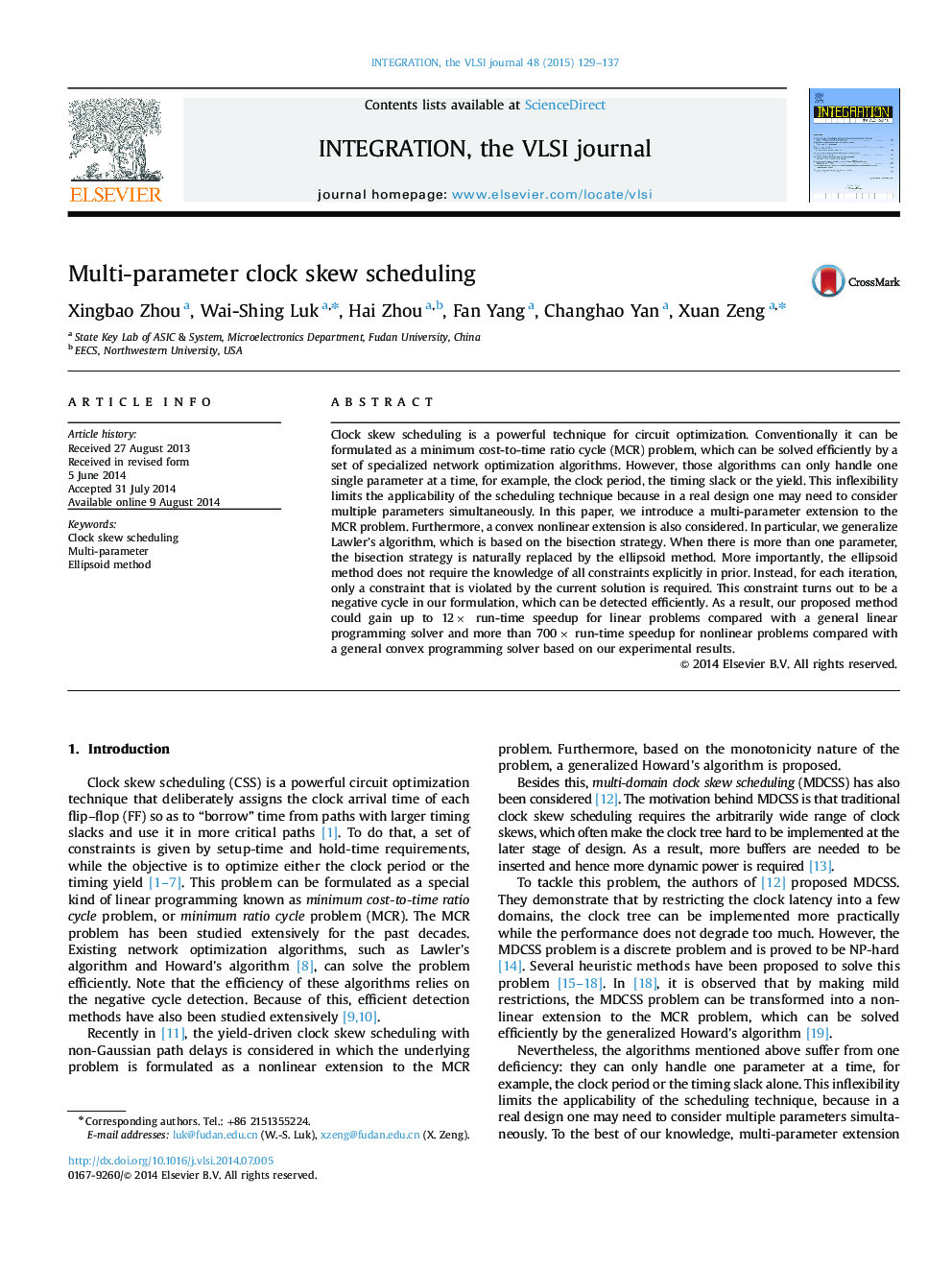| Article ID | Journal | Published Year | Pages | File Type |
|---|---|---|---|---|
| 539635 | Integration, the VLSI Journal | 2015 | 9 Pages |
•Traditional clock skew scheduling can handle only one parameter at a time.•We propose the multi-parameter clock skew scheduling problem.•We propose an ellipsoid based algorithm to solve the problem.•The method can handle both linear and nonlinear problems efficiently.
Clock skew scheduling is a powerful technique for circuit optimization. Conventionally it can be formulated as a minimum cost-to-time ratio cycle (MCR) problem, which can be solved efficiently by a set of specialized network optimization algorithms. However, those algorithms can only handle one single parameter at a time, for example, the clock period, the timing slack or the yield. This inflexibility limits the applicability of the scheduling technique because in a real design one may need to consider multiple parameters simultaneously. In this paper, we introduce a multi-parameter extension to the MCR problem. Furthermore, a convex nonlinear extension is also considered. In particular, we generalize Lawler׳s algorithm, which is based on the bisection strategy. When there is more than one parameter, the bisection strategy is naturally replaced by the ellipsoid method. More importantly, the ellipsoid method does not require the knowledge of all constraints explicitly in prior. Instead, for each iteration, only a constraint that is violated by the current solution is required. This constraint turns out to be a negative cycle in our formulation, which can be detected efficiently. As a result, our proposed method could gain up to 12× run-time speedup for linear problems compared with a general linear programming solver and more than 700× run-time speedup for nonlinear problems compared with a general convex programming solver based on our experimental results.
